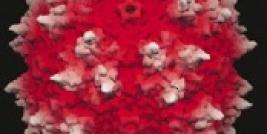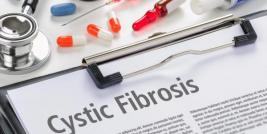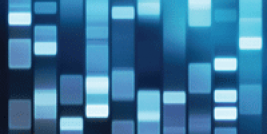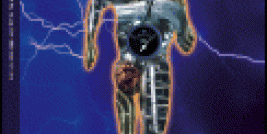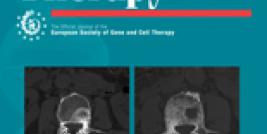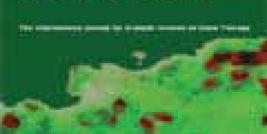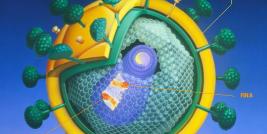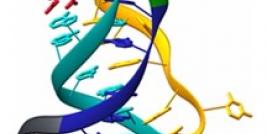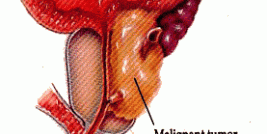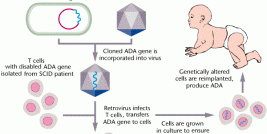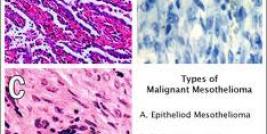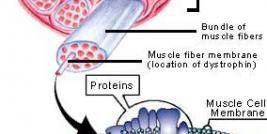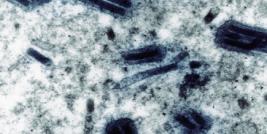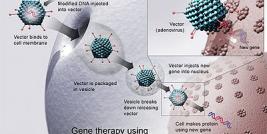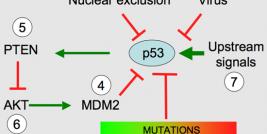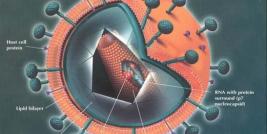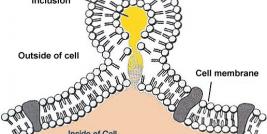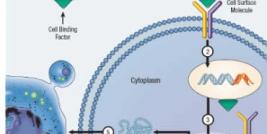Article by: Maria Jose Herrero and Salvador F. Aliño
Introduction
Gene therapy is a strategy in which nucleic acid is administered for therapeutic purposes for both inherited and acquired diseases. A number of viral and nonviral vectors have been developed to circumvent the barriers for gene delivery, but the safety concerns of viral vectors have not been solved yet. On the other hand, non viral vectors are still inefficient compared to viral vectors but they offer safety as the main advantage and moreover they can be easily formulated as medicines.
The development of non viral vectors incorporates new technologies to mimic the tropism and efficacy of virus mediated gene delivery. Basically, non viral vectors are categorized in: a) lipoplexes that results from charge interaction between anionic DNA (or polynucleotide) and cationic liposomes (1); b) polyplexes that results from nucleic acid interaction with linear (polylisine, spermine)or branched (polyetileneimine, PEI) cationic polymers (2); c) lipopolyplex, a term that has been reserved for combinations of cationic liposomes and polymers with DNA (3). In both cases, several DNA molecules are compacted into particles but also, other strategies have been made to developed vectors containing a single DNA molecule (6). However, the positively charged DNA/complex tends to aggregate in biological fluids and lacks tissue specificity. Vectors have been modified with the aim to introduce advantages, sucha as; a) to prevent aggregation and to prolong the circulation time in blood the vectors have been PEGylated (4); b) to increase the cellular uptake and mimic viral tropism, ligands are coupled on vector surface to trigger receptor-mediated endocytosis after vector interaction with the corresponding cell surface receptor (4,5); c) to increase the nuclear entry of DNA from cytoplasm, vectors incorporate nuclear localization signal peptides in the formulations (6); d) also vectors have been appropriately modified to avoid DNA endosome digestion and to promote cytosolic transit toward the nucleus (7). Interestingly, in some circumstances naked DNA can be transferred in the absence of any carrier by means of the hydrodynamic procedure, which is now considered the first systemic delivery method for transferring naked DNA because its simplicity, efficiency and potential clinical application.
Hydrodynamic tail vein injection of naked DNA
The nonviral vector-based approach using plasmid DNA is expected to be a safer method to mediate gene transfer compared with any approaches using viral vectors. The hydrodynamic gene delivery via tail vein injection is a highl efficient procedure to deliver nucleic acids to the liver in small animals, as mice and rats. It originally was described consisting in the rapid injection in 5-7 seconds of a saline solution containing a plasmid naked DNA in a tenth volume of the animal´s body weight. That means, in a typical experiment employing mice weighing 20 µg, the injection in 5-7 seconds of the wished amount of naked DNA in 2ml volume of saline solution.
Since naked DNA is the simplest and safest gene delivery system (8), multiple approaches have been attempted for in vivo liver gene delivery, including intraportal injection (9), increased DNA retention time in the liver (10), electrogene transfer (11), hydrodynamic i.v. injection (12), and mechanical liver massage (13). Hydrodynamic transfection has become widely used because of its simplicity and high efficiency and although nucleic acid delivery has been observed in all major organs, the best results are found in the liver.
The procedure mediates potent gene transfer mainly in the liver, is well tolerated and interestingly, no serum biochemistry signs of liver injury have been observed after eight accumulative doses 15 day apart, whereas efficacy of transgene expression was increased accordingly (14). The liver injury induced by hydrodynamic injection in the first 24-48h after injection, should be considered a transitory and non serious adverse event. On the other hand, physical gene transfer procedures as ultrasound (focusing acoustic energy on specific body regions) has emerged as a promising method because of it is non-invasive, safety and versatile (15). Since the respective advantages of ultrasound and hydrodynamic injection are complementary, their combination may yield a synergistically improved physical method for gene delivery (16). Although the great part of studies have been performed employing plasmid DNA for gene delivery, any polynucleotide could be delivered by this method, such as small interfering RNA (siRNA) for gene silencing strategies (17).
Mechanism of Hydrodynamic gene transfer
Hydrodynamic gene delivery is a procedure with potential clinical applications, but adverse effects of hydrodynamic injection upon the systemic circulation, which can even lead to circulatory collapse and death, largely limit the translation of the procedure to the clinical practice. In this respect a better knowledge of the mechanisms involved in the high efficiency of gene transfer, will contribute to develop a modified procedure with mild hemodynamic effects, acceptable for clinical use. Although the complete mechanism has not been elucidated, significant advances have been achieved in the recent research observations, such as (see figure):
a) early studies have observed that hepatocytes located around the pericentral vein are mainly transfected by hydrodynamic injection (18, 19, 20), suggesting that retrograde blood flow in the liver could be involved in the transfection mechanism, since the blood collected from liver central veins leave the liver through hepatic vein and drain to inferior cava vein, where also drain the tail vein.
b) Hydrodynamic injection greatly increases the pressure of inferior cava vein (13) suggesting that the normal blood flow in the liver, from portal vein to hepatic vein, must be engaged and also observations supporting that a blood flow inversion is hemodynamically possible (14) have been achieved by simultaneous pressure measurements of both portal and inferior cava vein, indicating an inversion of differential pressures for at least 5 min, after hydrodynamic injection.
c) The inverted blood flow in hepatic sinusoidal has been confirmed by intravital microscopy (14) during the time of hydrodynamic injection. Then, intrahepatic flow is stopped for a minute approximately and the normal flow is progressively restored in additional few minutes. This step must be very important in the process of gene transfer because when DNA gene was administered in low volume, a few minutes after an irrelevant hydrodynamic injection of saline solution, good gene transfer efficacy is also observed (20, 21, 22), suggesting that the process could involve morphological liver changes persisting for a short time period that could facilitate physical delivery of a wide range of molecules (20, 23), from dyes to proteins, plasmid DNA and viruses.
d) Morphological liver changes have been confirmed by electron microscopy. Several studies suggest the formation of small pores in the cell membrane during the hydrodynamic injection (20, 21). However, the large pore diameter suggested for DNA delivery should limit cell viability and mediate a more relevant cell toxicity and this certainly does not occur. An alternative cellular entry rout has been described (14, 24) studying by electron microscopy the early morphological liver changes mediated by hydrodynamic injection of 2.5% glutaraldehyde fixer. As expected, the diameter of venous vessels and sinusoids, the endothelium discontinuity and the virtual Disse space between endothelium and hepatocyte, was manifestly increased. But, the more interesting liver change was the presence of a large number of intracellular vesicles, without obvious membrane defects. This observation is suggesting that plasmid DNA delivery to hepatocyte involves a microfluid uptake process and that penetration into cytoplasm could be mediated via a simple diffusion process through permeable sites in the cell membrane of large endocytic vesicles, induced by the hydrodynamic injection. This suggestion satisfactorily combines cellular DNA entry through plasma membrane with low hepatocyte toxicity and the delayed uptake of DNA, observed in some experiments. However, additional studies will be necessary to know the exact mechanism of DNA delivery by this procedure.
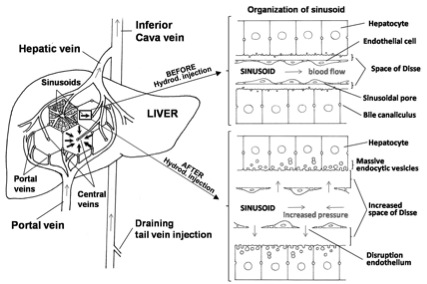
Figure Legend. Liver changes mediated by hydrodynamic tail vein injection. The liver receives a profuse blood supply from the hepatic artery and portal vein. Blood flow from portal vein to inferior cava vein must cross the liver parenchyma through the hepatic sinusoids. Since hydrodynamic tail vein injection drains into inferior cava vein, it results in increased venous pressure that mediates retrograde blood flow into liver sinusoids. Employing different experimental strategies such as measuring the differential pressure between portal and central veins, intravital microscopic observation of hepatic blood circulation, and transmission electron microscopy, we suggest that the mechanism of hydrodynamic liver gene transfer involves transient inversion of intrahepatic blood flow and massive fluid endocytic vesicles in hepatocytes, mainly in those distributed around the central vein.
The recent advances on the mechanisms involved in hydrodynamic mediated gene transfer to liver, offer opportunities to improve the technique and to move it to large animals, employing catheterization procedures (25, 26, 27) as safe and noninvasive methods for regional in vivo gene delivery under mild condition, with potential clinical applications (28)
Acknowledgements
This work has been partially supported by AP095/09, and SAF2007-64492 projects from Generalidad Valenciana and Ministerio de Educacion y Ciencia

